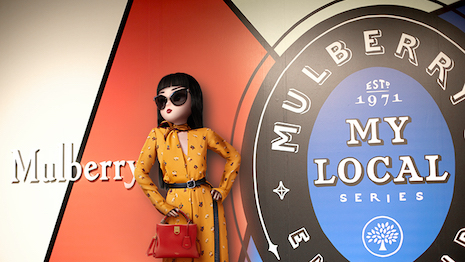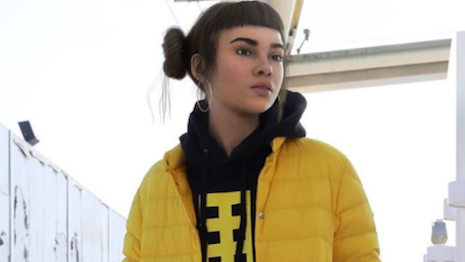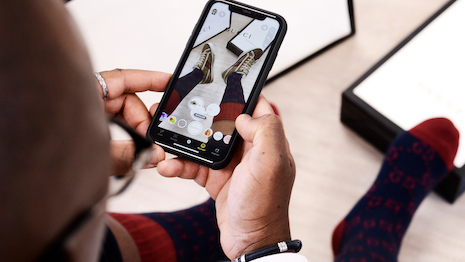 Noonoouri "goes" to Tokyo for a Mulberry partnership. Image credit: Alibaba
Noonoouri "goes" to Tokyo for a Mulberry partnership. Image credit: Alibaba
NEW YORK – Ecommerce sales in the luxury industry have accelerated as a result of the coronavirus pandemic, but will digital storytelling also see exponential growth?
As a significant number of consumers remain hesitant to venture into physical stores for retail therapy, brands are faced with the challenge of engaging consumers exclusively through digital channels. In a conversation at the Future of Luxury eConference on Sept. 23, branding experts discussed how luxury brands can use a range of sophisticated tools to reach shoppers more effectively than social media or traditional influencers.
“There’s a lot of back and forth about, are influencers influential?” said Rori DuBoff, managing director of innovation and strategy at Accenture Interactive. “There's a lot of skepticism and cynicism right now [among brands and consumers] about which influencers to trust and not trust.
“There’s something around this realm of virtual reality, of being able to see and touch things tactically, that enables people to maybe have more confidence in a purchase decision, more so than maybe an influencer,” she said.
Future of Luxury eConference was produced by Luxury Daily
Virtual influencers
Luxury brands had already begun experimenting with virtual reality, augmented reality (AR) and digital avatars and influencers. However, as the pandemic rapidly increased reliance and acceptance of such technology, questions remain about the effectiveness and ethics of these tools.
“I think each brand has to think about that where they want to go and do they want to replace humans with computer-generated models,” Ms. DuBoff said.”During COVID, when it's been harder to do production and when it’s harder to find talent, it’s made a lot of sense.
“For luxury and fashion, which are at the forefront, it makes sense that they’d be one of the first movers — they’re really the area that’s been taking advantage of using these sort of virtual influencer models,” she said. “I think we get into somewhat of a precarious territory, when you start thinking about what is it you’re saying when you're creating these virtual influencers.”
 Moncler tapped Lil Miquela for its Genius effort. Image credit: Moncler
Moncler tapped Lil Miquela for its Genius effort. Image credit: Moncler
Moncler and Prada are among the brands that have worked with Lil Miquela, a computer generated Instagram star with an audience of more than 2.7 million, to debut products or build hype around an event (see story). Noonouri, a virtual personality known for her collaborations with fashion and luxury brands, is a less human-like take on CG influencers (see story).
Campaigns featuring CGI can also cut costs associated with travel and staff, as well as have less of an environmental impact for brands who are looking for ways to be sustainable, according to Ana Andjelic, brand strategist and former chief brand office at Rebecca Minkoff.
However, while virtual personalities may be more cost-effective and eye-catching than their human counterparts, they tend to lag behind real influencers in driving brand goals such as awareness and engagement, according to a 2018 report from Fashionbi (see story).
“The first thing is to redefine the business you’re in because you need to think about that new technology, not as a marketing tool, but more as a business engine,” Ms. Andjelic said. “In terms of storytelling, it means not just being able to see the store but was also trying to bring make digital real and working digital influences in a context where your consumers are already spending.”
Digitizing experiences
Ms. DuBoff also noted that technology has improved to make digital experiences more elevated as brands continue to escalate their online presences beyond straightforward sites. For instance, chatbots continue to improve as a resource for consumers needing support and assistance, from a frustration to a more widely accepted tool.
As a result of the pandemic, retailers are looking for ways to virtually recreate aspects of the in-store experience. This might mean virtual styling sessions, live-streaming events, unique filters on social media or AR features on mobile applications.
 Snapchat users can now use AR tech to virtually try on Gucci footwear to see if they like the merchandise and then have the option to buy it directly from that location. Image courtesy of Gucci
Snapchat users can now use AR tech to virtually try on Gucci footwear to see if they like the merchandise and then have the option to buy it directly from that location. Image courtesy of Gucci
In 2019, Italian fashion label Gucci took a technology-forward step with the introduction of a “try on” augmented reality feature for its Ace sneakers on its mobile application, foreshadowing future fashionable uses of AR. Through an update to the existing Gucci iOS mobile app, users can virtually “try on” the label’s popular Ace sneakers (see story).
This summer, Gucci expanded the AR service to Snapchat to let customers and prospects virtually try on its footwear and buy the merchandise if they choose (see story).
This fall, British fashion label Burberry is complimenting its in-store pop-ups with a digital experience to celebrate its Animal Kingdom campaign. Online, shoppers can select which silhouette they are interested in before viewing the different color ways available, including pop-up exclusive shades (see story).
“Designing your products, your fashions, your designs, whatever your sketches are in the beginning in 3D, and then adding models and virtual replicas of those products in libraries — that takes planning, that takes data,” Ms. DuBoff said. “That is an investment.
“But once again, it’s the investment we made when we switched from an analog and TV world to a digital world,” she said. “You can’t stop what’s coming.”
